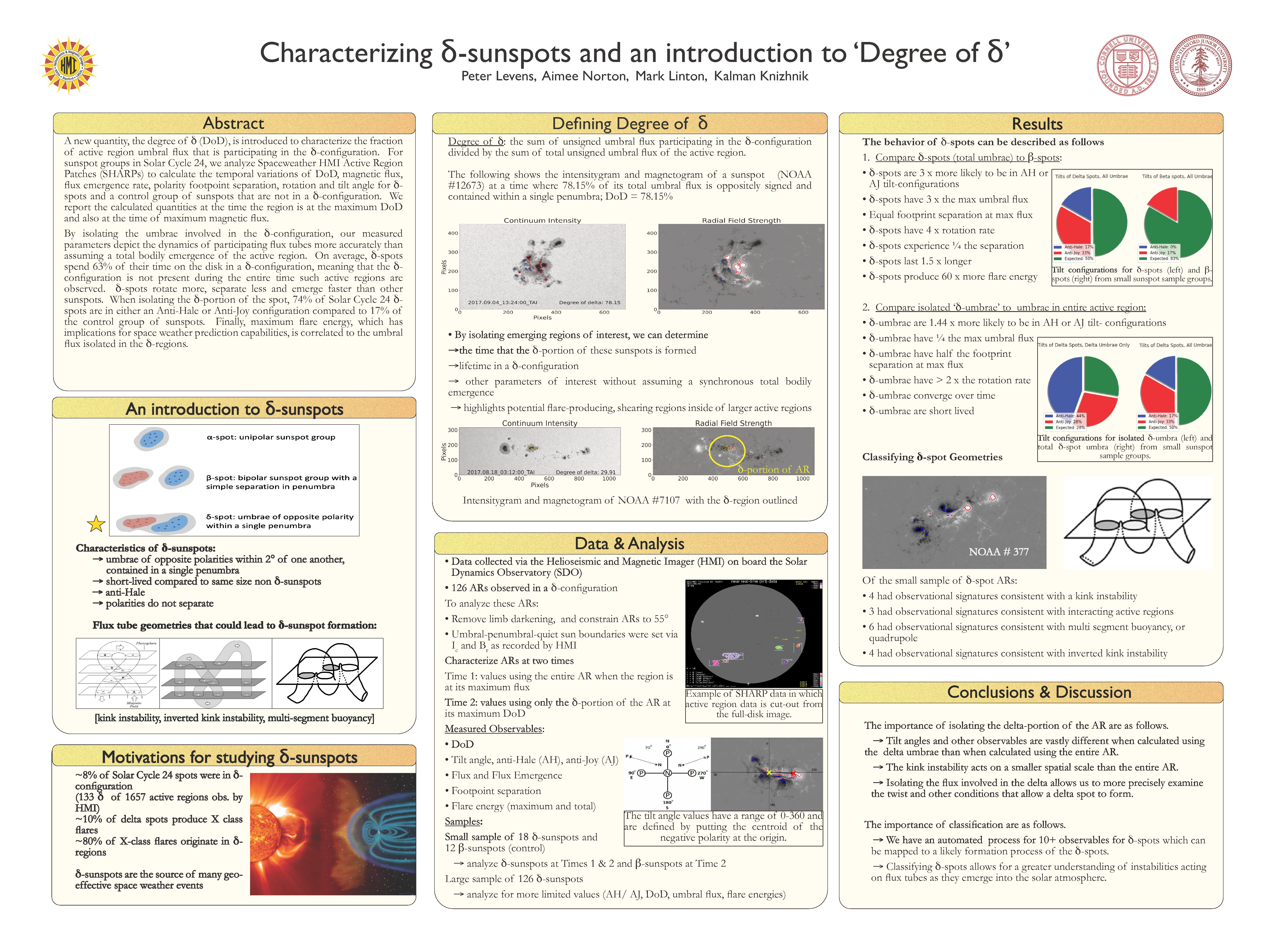Authors: Peter Levens (Cornell University, Stanford University), Aimee A. Norton (HEPL Solar Physics, Stanford University), Kalman J. Knizhnik (Naval Research Laboratory), Mark G. Linton (Naval Research Laboratory)
A δ-sunspot is a sunspot whose configuration is characterized by opposite polarity umbral flux contained within the same penumbra. That being said, sunspots are rarely easily classified or well behaved. It is common for active regions to be composed of multiple simultaneous or asynchronous flux emergence events which alter the classification of the sunspot during its lifetime. A new quantity, the degree of δ (DoD), is introduced to characterize the fraction of active region umbral flux that is participating in the δ configuration. For sunspot groups in Solar Cycle 24, we analyze Spaceweather HMI Active Region Patches (SHARPs) to calculate the temporal variations of DoD, magnetic flux, flux emergence rate, polarity footpoint separation, rotation and tilt angle for δ-spots and a control group of sunspots that are not in a δ configuration. We report the calculated quantities at the time the region is at the maximum DoD and also at the time of maximum magnetic flux. By isolating the umbrae involved in the δ configuration, our measured parameters depict the dynamics of participating flux tubes more accurately than assuming a total bodily emergence of the active region. On average, those regions classified as δ-spots spend 63% of their time on the disk as δ-spots, meaning that the δ-configuration is not present during the entire time such active regions are observed. δ-spots rotate more, separate less and emerge faster than other sunspots. When isolating the δ portion of the spot, 74% of Solar Cycle 24 δ-spots are in either an Anti-Hale or Anti-Joy configuration compared to 16% of the control group of sunspots. Maximum flare energy, which has implications for space weather prediction capabilities, is correlated to the umbral flux isolated in the δ regions, in order to gain insight into how δ-spots form.


